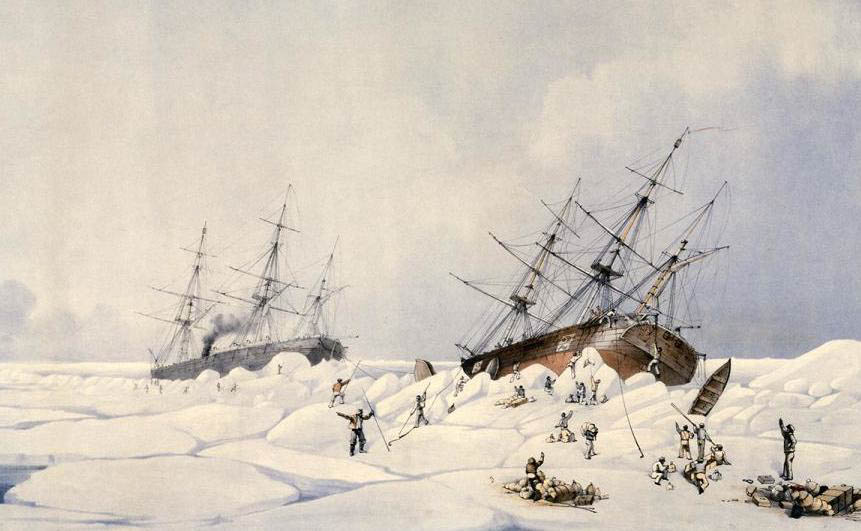The Breadalbane was a three-masted merchant ship designed in 1843 by Hedderwich & Rowan in a shipyard on the Clyde River in Scotland for a Scottish merchant consortium. The architecture mirrored hundreds of other trans-oceanic ships that were used in early Victorian times. It was 38.1 metres (125 ft) long, with a 7.3 metre (24 ft) beam and a 5.5 metre (18 ft) hold depth. The ship was initially used for transportation within Europe of wine, wool and grain, and spent her first ten years sailing between England and Calcutta.

The Breadalane was commissioned for a new voyage to bring supplies into the Resolute Bay area (now part of Nunavut) for Sir Edward Belcher’s high-Arctic search expedition. Belcher’s expedition had been pursuing the Franklin Expedition since 1852, in order to find out what happened to the ill-fated voyage. The Royal Navy sent Belcher’s expedition which was to be the first and last voyage get the facts on the HMS Erebus and HMS Terror.
On 21 August 1853 in Lancaster Bay, some 500 miles north of the Arctic Circle, Breadalbane was anchored to an ice floe half a mile south of Beechey Island. and was surrounded by slow-moving ice. Shortly after midnight, a slab of ice penetrated the starboard bow. The crew of 21 quickly salvaged as many supplies and personal items as possible and then abandoned ship. The vessel sank to the Barrow Strait floor within fifteen minutes and all 21 crew members were rescued.
Joseph B. MacInnis found the ship in Aug 1980, following two unsuccessful attempts to locate the Breadalane in 1978 and 1979, using side-scan sonar towed by CCGS John A. Macdonald, a Coast Guard icebreaker. She lays on the seafloor intact with two of her three masts still standing and her bow pointing east, in the cold Arctic water, at 330 feet.
The Wreck of HMS Breadalbane was declared a National Historic Site of Canada in 1983 because the vessel was involved in the search for the missing expedition of Captain John Franklin.






